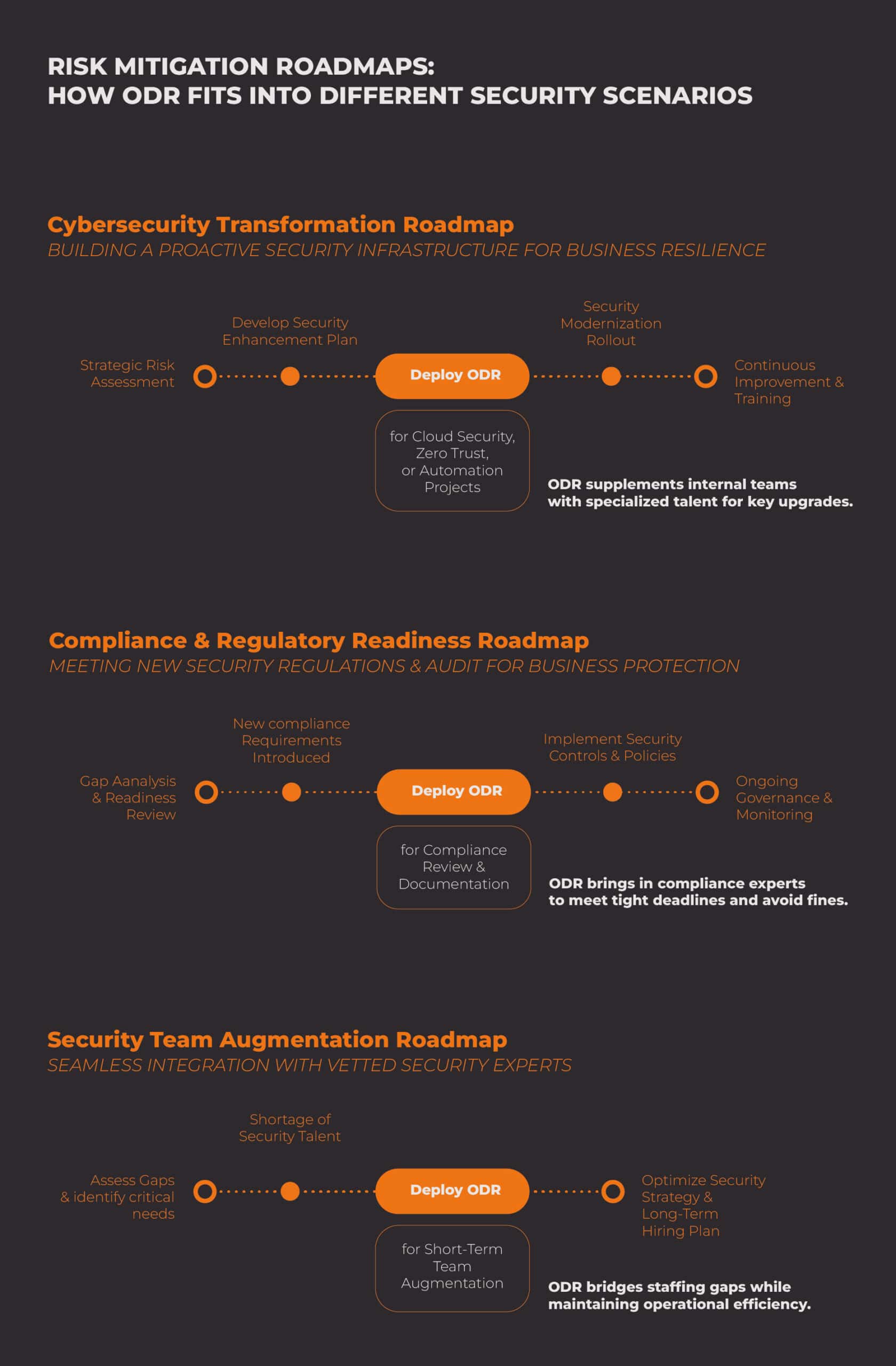Cyber threats are escalating at a fast pace, with the average cost of a data breach reaching $4.88 million last year. One recent industry report showed that ransomware attacks increased substantially this year. Attackers actively scan for weaknesses in software, infrastructure, and human behavior. When they spot a flaw, they move quickly to exploit it. This leaves many enterprises in a high-pressure situation, especially as regulations change and clients demand stricter data protection. The difference between a contained security issue and a major incident can come down to the speed and depth of the response.
A key challenge is that many teams operate with limited staff or encounter specialized tasks they are not ready to handle. A newly announced exploit might appear, forcing immediate action to avoid data exposure. Some companies find they do not have enough personnel who are experienced in advanced techniques like network segmentation, penetration testing, or compliance analytics. Others struggle with scaling requirements, such as integrating a new security platform or meeting tighter deadlines under updated regulations. These pressures often appear suddenly and can strain existing teams.
Agile risk mitigation helps companies address these problems by combining flexibility and structured planning. When unexpected threats surface, it is essential to react fast without sacrificing broader goals. On-Demand Resourcing (ODR) provides a practical route to achieve this balance. ODR allows enterprises to bring in skilled professionals on short notice, covering tasks that might otherwise stall or overwhelm the in-house staff. Along with ODR, many businesses rely on project-based engagements and strategic advisory services to establish solid governance, plan future improvements, and define a risk roadmap. This blend of quick-response methods and comprehensive thinking forms the backbone of an adaptable defense.
ODR offers access to specialized roles for areas like compliance reviews, incident investigations, or risk assessment. Rather than spending months hiring and train new employees, companies can contract qualified experts who can begin work immediately. Because many attacks escalate in days, if not hours, speed can significantly reduce damage and help maintain business continuity. ODR is especially useful when a company needs short-term assistance to meet a new standard or respond to an urgent vulnerability. Others fold ODR into an ongoing plan, where immediate staffing and long-range strategy work in tandem.
However, while ODR can address immediate needs, it is generally part of a larger strategy that includes longer-range planning. It usually fits alongside other methods:
Strategic Advisory
(Longer-term guidance for building frameworks, policies, and a roadmap):
- Security Strategy for Teams
- Security Leadership Development
- Risk Strategy Roadmap and Formation
- Gap Analysis and Readiness
- Strategic Planning and Communications
- Knowledge Management
Project Based Solutions
(Deliverables focused on objectives such as cloud security or structured remediation):
- Security Assessments and Penetration Testing
- Business Continuity and Disaster Recovery
- Cloud Infrastructure and Automation
- O365 and SharePoint Modernization
- Microsoft Copilot Enablement
- Vendor Risk Management and Compliance Services
- Application Security and Zero Trust Programs
Some companies adopt ODR first to handle pressing issues, then expand into advisory discussions. Others pursue both simultaneously, ensuring enough hands for day-to-day tasks while shaping a plan for future enhancements.
Building a risk management roadmap helps connect immediate demands with larger aims. This roadmap typically identifies risk factors, sets priorities, and outlines actions to reduce them. ODR complements the plan by providing staff who can keep short-term tasks on track while leaders focus on oversight. Common steps in forming a roadmap include listing critical threats, outlining remediation strategies, and tracking success. Our resource on Risk Strategy Roadmap Formation details how structured planning raises efficiency and readiness. By combining ongoing governance with quick operational support, a company can handle threats more effectively.

For example, a security team might lose a key staff member and face new compliance demands. Another might plan a rapid rollout of updated access controls. In both cases, ODR offers the capacity boost needed to avoid disruptions. That said, leaders should also consider overarching goals. Sometimes a deeper strategy is required, including multi-phase programs that refine policies and unify tools.
Effective defense combines leadership that sets clear priorities and flexible staffing that adjusts to new pressures. ODR meets short-term challenges, while well-structured leadership communicates objectives and coordinates tasks. This alignment helps newcomers integrate smoothly. For more insights on shaping leadership in security, consider our resource on Security Leadership Development.
Enterprises frequently ask if ODR alone covers all risk needs. Often, it depends on the scope. If tasks are temporary or highly specialized, ODR may suffice. If the goal is to elevate the entire security posture, project-based or advisory work might be necessary. A blended approach is often ideal, giving teams real-time support and a strategic plan for longer-term goals.
If you are deciding how best to respond to escalating threats, decide on whether you have enough staff to cover unexpected problems. Also, examine any planned initiatives like large-scale tech deployments or tighter regulatory requirements. Determine if you have a clear roadmap for prioritizing risk. These answers will help identify whether ODR, advisory, project work, or some combination fits your situation.
We can help you define the right mix of services. Our team can match you with experienced staff at short notice or help you set up a broader risk management structure. ODR is one useful option among many. Read how we helped a client meet multiple challenges in this Risk Remediation Program without halting business operations. To start a conversation, contact us at our Contact Us page. We look forward to discussing how you can respond to urgent security threats while building a lasting framework for safety.

